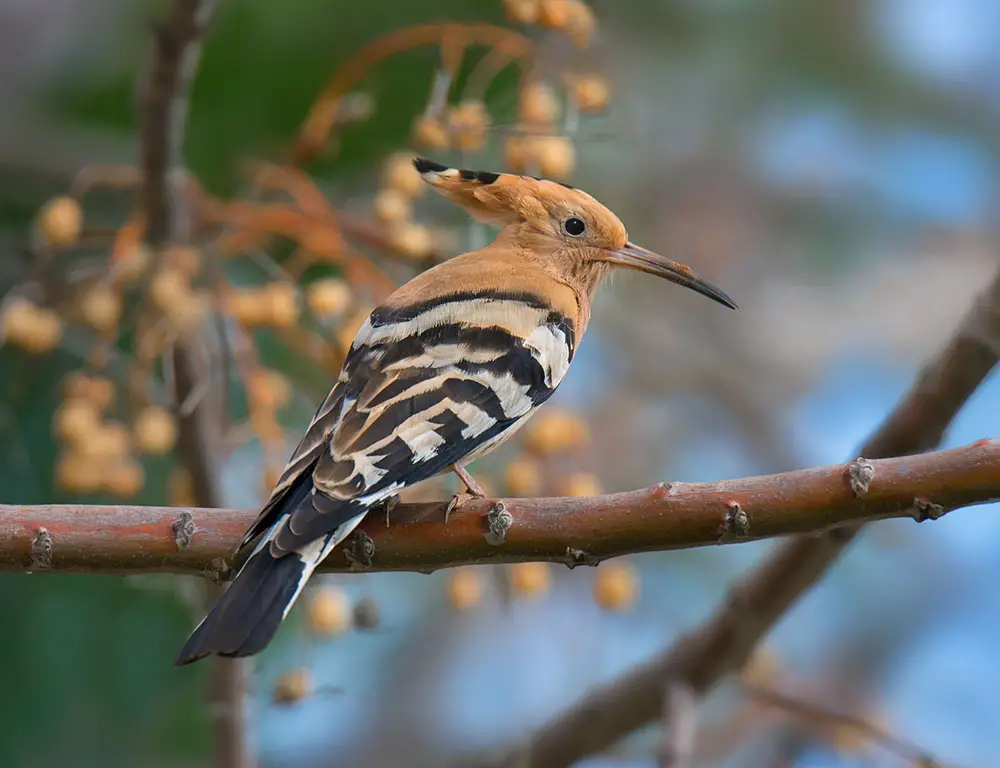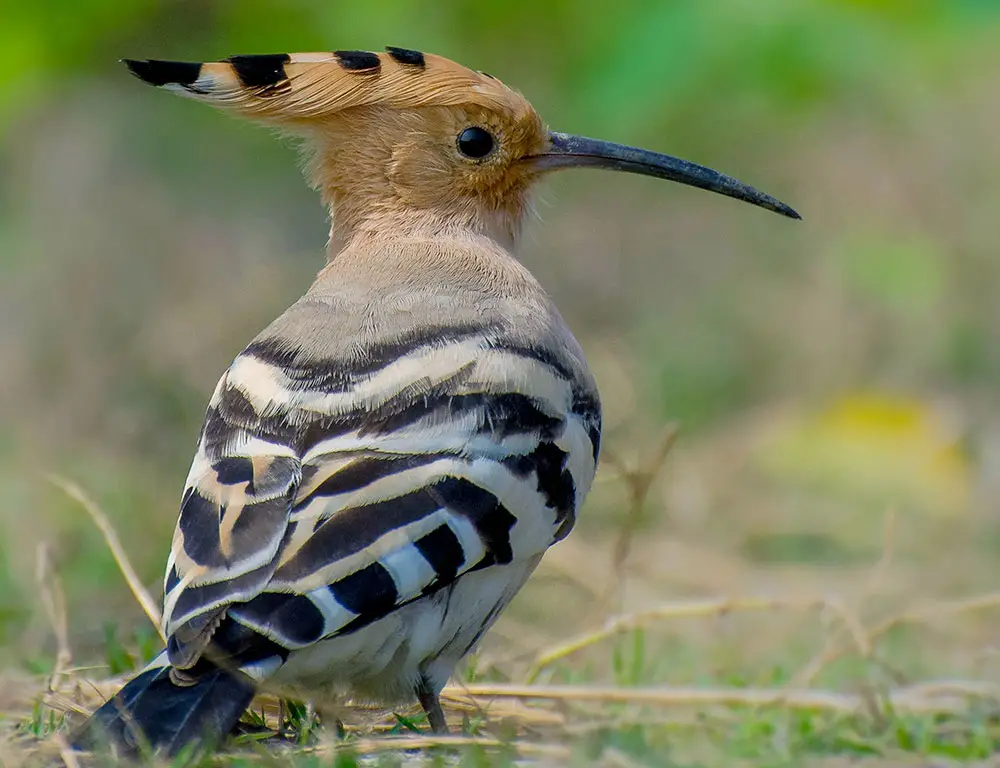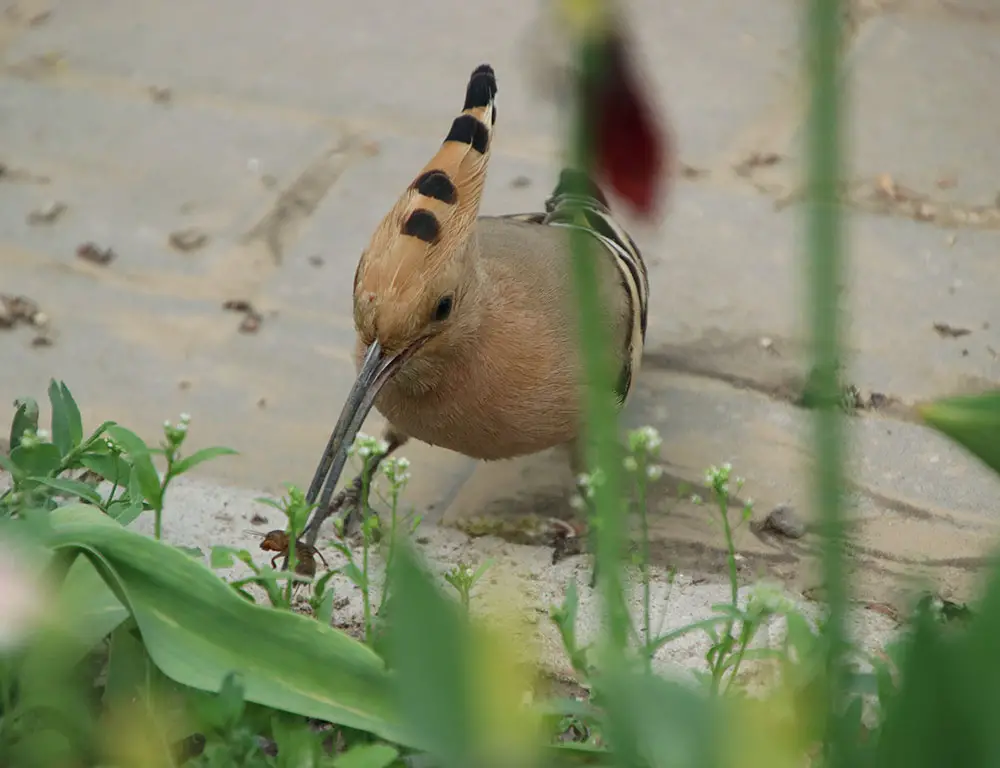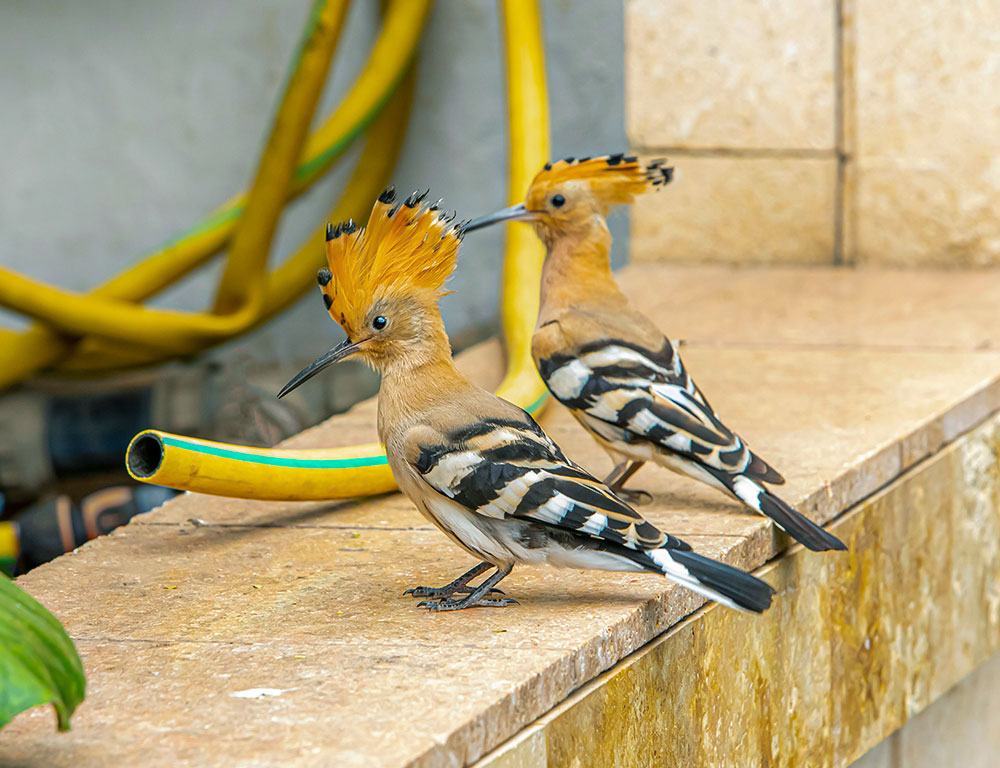Delving into the world of hoopoes reveals a captivating saga of one of nature’s most intriguing avian species.
With their striking plumage and enchanting behaviors, these distinctive birds offer a wealth of fascination for bird enthusiasts and curious minds alike.
From their elegant courtship displays to their role in ancient mythology and cultural symbolism, hoopoes have left an indelible mark on human imagination throughout history.
In exploring their biography, we unravel the mysteries surrounding hoopoes, shedding light on their habitat preferences, breeding habits, and the unique traits that set them apart in the avian kingdom.
Join us on a journey of discovery as we delve deep into the captivating world of hoopoes, uncovering the secrets that make them genuinely extraordinary birds. So, stay focused.

Taxonomy and Classification of Hoopoes
Taxonomy is the science of classifying living organisms based on shared characteristics and evolutionary relationships.
It involves organizing organisms into hierarchical categories based on similarities in their genetic makeup, morphology, behavior, and other traits.
This systematic approach allows scientists to study the diversity of life and understand the evolutionary history of different species.
Here’s a nice table outlining the taxonomical details of hoopoes:
| Kingdom | Animalia |
| Phylum | Chordata |
| Class | Aves |
| Order | Bucerotiformes |
| Family | Upupidae |
| Genus | Upupa |
| Species | Epops |
| Common Name | Hoopoe |
The hoopoe (Upupa epops) belongs to the family Upupidae within the order Bucerotiformes. It is characterized by its distinctive crown of feathers, long, thin bill, and distinctive call.
Hoopoes are found across Afro-Eurasia and are known for their unique feeding behavior and striking plumage.
The hoopoe (Upupa epops) exhibits several subspecies across its range, each with distinct variations in plumage, size, and habitat preferences. Here are some of the notable subspecies:
Upupa epops epops
It is found in Europe, North Africa, and temperate parts of Asia.
The plumage is characterized by a pinkish-buff coloration on the underparts, with black and white stripes on the wings and tail.
Typically inhabits open woodland, parks, gardens, and agricultural areas.
Upupa epops africana
Native to sub-Saharan Africa, from Senegal to Ethiopia and south to South Africa.
Generally larger than other subspecies, with more extensive black markings on the wings and tail.
Prefers savannas, woodland edges, and scrubland habitats.
Upupa epops senegalensis
Found in the Sahel region of Africa, from Mauritania to Sudan.
Smaller than other subspecies, with less pronounced markings on the plumage.
They are often observed in semi-arid habitats, including acacia woodlands and thorn scrub.
Upupa epops major
Native to Central Asia, including parts of Kazakhstan, Uzbekistan, and Turkmenistan.
Features paler plumage than other subspecies, with more subdued black and white markings.
Inhabits various habitats, including steppe grasslands, semi-desert areas, and agricultural fields.
Upupa epops saturata
Found in the Indian subcontinent, from Pakistan to Nepal and Sri Lanka.
Exhibits a rich rufous-brown coloration on the underparts, with prominent black and white markings on the wings and tail.
Prefers open forests, scrublands, and cultivated areas with nearby water sources.
These subspecies of the hoopoe demonstrate how geographic isolation and ecological factors can lead to distinct variations within a species.
Hoopoes’ Habitat and Ecology

Hoopoes (Upupa epops) are highly adaptable birds that inhabit various habitats across their extensive distribution. Here’s an overview of their habitat and ecology:
Woodlands and Forests
Hoopoes are often found in open woodlands, including deciduous and evergreen forests. They prefer habitats with scattered trees, where they can forage for insects in the leaf litter and soil.
Grasslands and Savannas
In addition to woodlands, hoopoes inhabit grasslands, savannas, and meadows. These open habitats provide ample opportunities for feeding on insects, spiders, and other invertebrates.
Urban and Agricultural Areas
Hoopoes adapt to human-altered landscapes, including urban parks, gardens, and agricultural fields. They can often be seen foraging for food in freshly plowed fields or lawns.
Semi-arid Regions
Some hoopoe subspecies are adapted to semi-arid and arid environments, such as scrublands, deserts, and steppe grasslands. They can survive in regions with limited water availability by obtaining moisture from their food.
Nesting Sites
Hoopoes typically nest in cavities, including tree hollows, rock crevices, and even holes in buildings or walls.
They are known for their elaborate courtship displays, where males perform aerial acrobatics and present nesting materials to attract females.
Feeding Ecology

Hoopoes have a specialized diet of insects, larvae, and other small invertebrates.
They use their long, slender bills to probe the soil and leaf litter for prey. Their diet may include fruits, seeds, and occasionally small reptiles or amphibians.
Migratory Behavior
While some hoopoe populations are sedentary, others undertake seasonal migrations, mainly those breeding in temperate regions. Migratory hoopoes may travel long distances in warmer climates to reach their wintering grounds.
Hoopoes are versatile birds with various habitat preferences and feeding strategies. Their ability to thrive in diverse environments makes them a fascinating subject for ecological research and conservation efforts.
Behavioral Traits of Hoopoes
Hoopoes (Upupa epops) exhibit attractive behavioral traits contributing to their survival and reproduction. Here are some notable behavioral characteristics of hoopoes:
Courtship Displays
During the breeding season, male hoopoes perform elaborate courtship displays to attract females. These displays often involve the male fluttering his wings, raising and lowering his crest, and presenting nesting materials to the female.
Nesting Behavior
Hoopoes are cavity-nesters, utilizing natural cavities in trees, rock crevices, or even man-made structures for nesting sites.
They may also excavate their nesting cavities using their substantial bills. Both male and female hoopoes participate in nest building and incubation of the eggs.
Parental Care
Once the eggs hatch, both parents actively care for the young.
They feed the chicks a diet of insects and larvae brought back to the nest in their bills. The parents also remove waste from the nest to maintain cleanliness.
Territoriality
Hoopoes are territorial birds, especially during the breeding season. They defend their nesting territory from intruders, often engaging in aggressive displays and vocalizations to deter competitors.
Feeding Behavior
Hoopoes have a distinctive feeding behavior, characterized by their habit of probing the ground with their long, slender bills in search of insects and other prey. They may also catch flying insects in mid-air using quick, darting flights.
Migratory Patterns
While some hoopoe populations are sedentary, others undertake seasonal migrations.
Changes in food availability or weather conditions often trigger these migratory movements. Migratory hoopoes may travel long distances between their breeding and wintering grounds.
Communication
Hoopoes are vocal birds, with various calls and vocalizations used for communication. These include soft contact calls between mates, alarm calls to warn of potential threats, and territorial calls to establish boundaries.
Hoopoes are fascinating birds with complex social and reproductive behaviors contributing to their success in various habitats. Studying these behavioral traits provides valuable insights into their ecology and evolutionary adaptations.
Breeding and Nesting Habits of Hoopoes

Here’s a cool table detailing the breeding and nesting habits of hoopoes:
| Aspect | Details |
| Clutch Size | Typically 5-8 eggs, occasionally up to 12 |
| Number of Broods | Usually 1 per breeding season |
| Egg Length | Approximately 3.5-4.5 centimeters |
| Egg Width | Approximately 2.5-3.0 centimeters |
| Incubation Period | Around 15-18 days |
| Nestling Period | Approximately 24-28 days |
| Egg Description | Oval-shaped, smooth surface, white or pale cream coloration with variable speckling or blotching |
| Nest Type | Cavity nests, often in tree hollows, rock crevices, or man-made structures |
| Nest Material | Usually lined with grass, leaves, feathers, or other soft materials |
| Nest Location | Varied, can be found in trees, cliffs, walls, or even ground burrows |
| Parental Care | Both parents share incubation and feeding duties |
| Fledging | Young leave the nest fully feathered and capable of flight |
Hoopoes are known for their elaborate courtship displays and active involvement in nest building and parental care. Their nests are typically located in cavities, which offer protection from predators and harsh weather conditions.
Both male and female hoopoes contribute to incubating the eggs and feeding the young, ensuring the survival of their offspring until they fledge and become independent.
Cultural Significance of Hoopoes

The hoopoe holds cultural significance in various societies worldwide, often symbolizing different qualities or representing themes within folklore, mythology, and literature.
Here are some examples of the cultural significance of hoopoes:
Symbol of Prosperity
In some cultures, the hoopoe is considered a symbol of good luck, prosperity, and abundance. Its colorful plumage and distinctive crown of feathers are associated with beauty and wealth.
Messenger of Spring
In many European and Middle Eastern cultures, the hoopoe is seen as a harbinger of springtime. Its arrival after winter is celebrated as a sign of renewal, awakening, and the return of warmth and fertility to the land.
Connection to Royalty
In ancient Egyptian mythology, the hoopoe was associated with the pharaoh and depicted in hieroglyphs as a symbol of kingship and royalty.
It was believed to possess magical powers and served as a messenger between the gods and the mortal realm.
Wisdom and Knowledge
In Persian and Islamic traditions, the hoopoe is revered for its wisdom and intelligence.
In the epic poem “The Conference of the Birds” by Persian poet Attar of Nishapur, the hoopoe serves as a spiritual guide, leading a group of birds on a journey of self-discovery and enlightenment.
Literary References
The hoopoe appears in various works of literature, including Aesop’s fables, where it is often portrayed as a wise and cunning character.
It also prominently features classical Persian poetry, symbolizing love, longing, and the quest for spiritual enlightenment.
Folklore and Superstitions
In some cultures, the hoopoe is associated with superstitions and folk beliefs. For example, in parts of Africa, the hoopoe’s call is believed to foretell rain, while in India, seeing a hoopoe is considered an omen of impending danger or bad luck.
Art and Symbolism
The hoopoe has inspired artists, poets, and artisans throughout history, appearing in paintings, sculptures, jewelry, and decorative arts.
Its distinctive appearance and cultural significance make it a popular traditional and contemporary artwork motif.
Wrapping Up
So, Hoopoes captivate us with their vibrant plumage, intriguing behaviors, and rich cultural symbolism.
From their elegant courtship displays to their role in ancient mythology, hoopoes embody a timeless connection between humanity and the natural world.
Whether admired for their beauty, revered for their wisdom, or celebrated as harbingers of spring, these remarkable birds inspire fascination and wonder across cultures and generations. Thank you for supporting us.